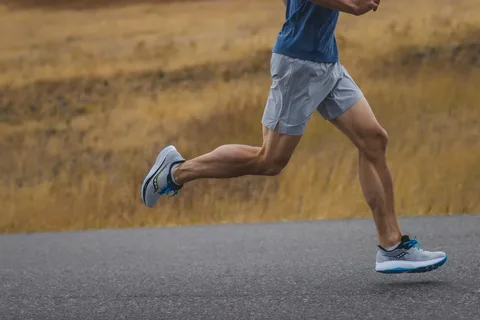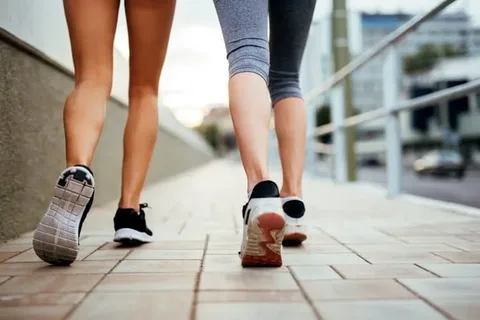Do you suffer from supination? If so, you know how difficult it can be to find the perfect pair of shoes. Supination, or under-pronation, can cause painful ankle and foot pain due to the foot not rolling inward enough when walking or running. The right shoes can provide support and improve your alignment, reducing the chances of injury and discomfort. In that blog post, they will discuss what to look for when buying best trainers for supination to prevent supination and how to choose the right trainers for optimal alignment. Read on to learn more!
What is Supination and Why Does it Matter?
Supination refers to the outward rolling motion of the foot during walking or running. It occurs when the weight is transferred to the outer edge of the foot, causing the foot to tilt outward. While some supination is normal, excessive supination can lead to various foot and ankle problems. Supination matters because it can disrupt the natural alignment of the foot and lower body. When the foot rolls outward excessively, it can stress the ankle, knee, and hip joints. That can lead to various issues, including ankle sprains, IT band syndrome, shin splints, and lower back pain.
Proper alignment is essential
Choosing the right trainers for optimal alignment is crucial in addressing supination. By wearing shoes that provide adequate support and cushioning, individuals can help align their feet properly and minimize the risk of injuries. Proper alignment is essential for distributing forces evenly throughout the foot and maintaining proper body mechanics during movement. With the right shoes, individuals can correct supination and ensure their feet are properly supported, improving comfort, reduced risk of injury, and optimal performance during physical activities.
How Do the Wrong Trainers Cause Supination?
Supination occurs when the body’s weight is unevenly distributed across the foot. When the foot rolls outward and weight is placed on the outer edge of the foot, it is considered supination. The wrong type of trainers can exacerbate that issue by providing inadequate support to the foot, leading to poor alignment and further pressure on the outer edge of the foot. Shoes with worn out or insufficient cushioning can also cause supination, as they cannot absorb the shock of each step effectively. That causes the body to compensate and roll the foot outward to avoid discomfort.
It is important to consult with a podiatrist
Choosing the right trainers to prevent supination and promote optimal alignment is crucial. Choosing the right type of shoe with sufficient cushioning and arch support can help correct supination and reduce discomfort. It is important to consult with a podiatrist or a footwear specialist to determine the best shoe for your foot type and specific needs.When it comes to special shoes for swollen feet, choosing a pair with proper alignment is essential for optimal comfort, performance, and injury prevention. Be sure to look for trainers that offer support for the arches, and consider getting a professional fitting to ensure a proper fit and alignment.
Alignment in special shoes for swollen feet
When choosing the right trainers for optimal alignment, it’s crucial to consider the importance of proper alignment in special shoes for swollen feet. Not only can improper alignment lead to discomfort and pain, but it can also increase the risk of injury. Special shoes for swollen feet should support the arches, which can help correct pronation and supination. When the foot is aligned properly, the body is better able to absorb shock, which can reduce the risk of injuries such as stress fractures or shin splints. In addition, proper alignment can improve overall performance and efficiency during physical activity. With the right support and alignment, the foot can better transfer energy to the ground, allowing for a more efficient stride.
What to Look for in trainers for supination?
If you’re dealing with supination, you must ensure your trainers can correct your gait and provide proper foot support. Here are some essential features you should look for when selecting your trainers for supination:
- Arch Support: High arches can cause supination, so make sure your shoes provide proper arch support. That will help distribute your weight evenly across your feet.
- Cushioning: A lack of cushioning can put pressure on the outside of your feet, exacerbating supination. Look for shoes with adequate cushioning to absorb shock and protect your feet.
- Stability: Stability shoes are designed to help correct overpronation, but they can also be helpful for supination. Look for shoes with a firm midsole and a structured upper to stabilize your feet.
- Flexibility: A shoe that’s too rigid can force your feet into a specific position, which may not be ideal for your gait. Look for flexible shoes to allow your feet to move naturally.
- Fit: Finally, make sure your shoes fit properly. They should be snug but not tight, with enough room in the toe box for your toes to wiggle. A shoe that’s too small or too big can worsen supination and lead to other foot problems.
Types of Shoes for Different Levels of Pronation and Supination
When choosing the right shoes to correct pronation or supination, there are different types of shoes to consider depending on the level of your condition. For individuals with mild pronation or supination, neutral shoes are a good option. These shoes provide equal support and cushioning throughout the foot, helping maintain a natural position and prevent excess rotation. Stability shoes may be more suitable if you have moderate pronation or supination. These shoes offer added support in the arch and midfoot areas, helping to control excessive movement and prevent discomfort or injury.
Proper fit is essential
For those with severe pronation or supination, motion control shoes are recommended. These shoes have a firm and supportive midsole and extra features such as a wide base and a firm heel counter to limit excessive movement and provide stability. It’s important to note that proper fit is essential for any type of shoe. Make sure to try on shoes with the socks you plan to wear during activity, and allow for some extra room in the toe box to accommodate any foot swelling that may occur during exercise. In addition to considering the type of shoe, it’s also important to pay attention to other factors such as the level of cushioning, the upper material, and the shoe’s weight.
 Reduce strain on the feet
Reduce strain on the feet
The upper should be made of breathable material to prevent excessive sweating and overheating, and the shoe should be lightweight to reduce strain on the feet and legs. When trying on shoes to correct supination, walking around and testing the shoe’s alignment is important. The shoe should feel comfortable and supportive, with no excess movement or twisting of the foot. Look for shoes with a firm and stable heel counter, a supportive arch, and a wide base to distribute weight evenly. Choosing the right shoes is crucial for correcting supination and maintaining proper alignment. By finding the right shoe type and fit, you can prevent discomfort and injury and enjoy your workouts and daily activities to the fullest.
How to Test Your New specialist shoes?
Once you’ve found a pair of shoes designed to correct supination and provide optimal alignment, it’s important to ensure that they’re doing their job. Here are some steps to follow to test your new specialist shoes for swollen feet:
- Stand straight and align your feet parallel, with your weight evenly distributed on both feet.
- Have someone take a photo of you standing from behind.
- Analyze the photo to see if your ankles are aligned with your knees and hips. Your ankles should not be leaning inwards or outwards.
- Take a few steps in your new shoes and notice how they feel. Do they feel comfortable and supportive?
- Repeat steps 1-3 to ensure that your new shoes are helping to correct your supination and provide optimal alignment.
You can avoid the discomfort
With the right trainers and shoes, you can avoid the discomfort and potential damage from supination, and enjoy comfortable, aligned feet. Remember that everyone’s needs are different, so take the time to find the shoes that work for you, and prioritize your foot health for years to come. Individuals can make informed choices when selecting trainers by understanding supination and its impact on alignment. Similarly, shoes that are too narrow or loose can also cause supination as the foot is not held securely in place, causing it to roll outward.
Conclusion
Supination can cause various issues, from discomfort and pain to serious problems such as plantar fasciitis or stress fractures. However, by choosing the right trainers and shoes, you can prevent or correct supination, and ensure that your feet are aligned optimally. When shopping for shoes, it’s important to consider arch support, cushioning, and the shoe’s shape. Pay attention to your individual needs and try various options before deciding. Testing your new shoes can also be helpful, and simple exercises like the toe spread test can indicate whether your trainers are supporting your feet correctly.



